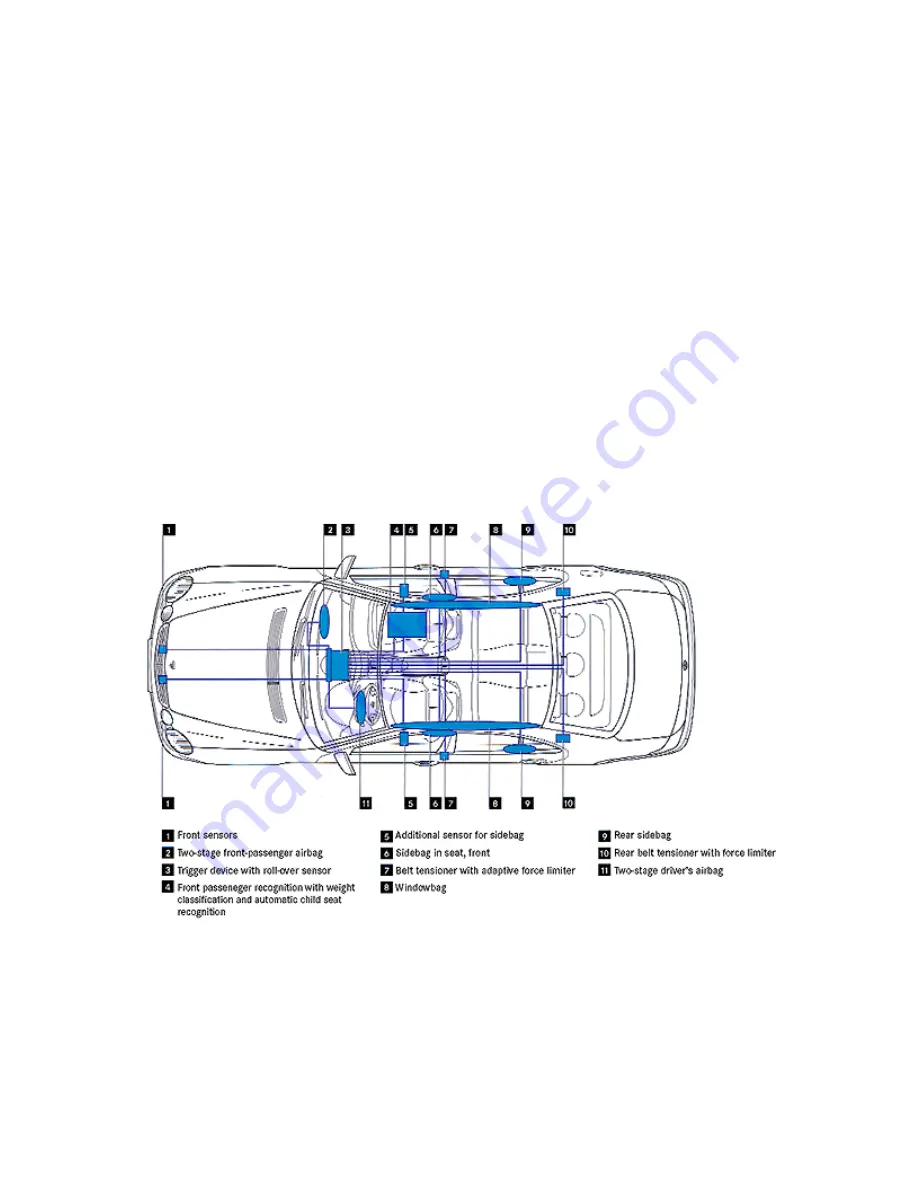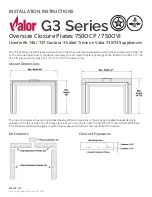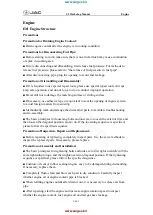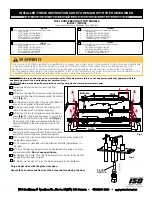
Supplemental Restraint Systems.
What happens when an air bag is deployed?
During deployment, an air bag inflates within a small fraction of a second during the
actual collision in order to provide the occupant with additional protection beyond that
afforded by the seat belt. As inflation must be very rapid to afford protection in the very
short accident sequence, deployment results with a relatively loud noise. When the
occupant is properly positioned, contact between the occupant and the inflated air bag
helps prevent or reduce the severity of the occupant’s striking interior surfaces of the
vehicle.
The front air bag or side impact air bag will deflate through vent holes or a permeable
fabric after inflation in order to provide the intended occupant restraint. The gases that
are used to inflate the air bag are hot when expelled from the inflator into the air bag
itself and cool down relatively rapidly when they mix with the atmosphere within the
vehicle. However, escaping gases can cause injury if body parts such as hands come into
contact with them. Additionally, the inflator remains hot and should not be touched after
inflation. Also, air bag inflation can result in some harmless smoke or dust being
released into the passenger compartment.
Available restraint systems for the E-Class (W 211)
5
Summary of Contents for SEAT BELTS AND AIRBAGS
Page 1: ...SEAT BELTS AND AIRBAGS ...





























